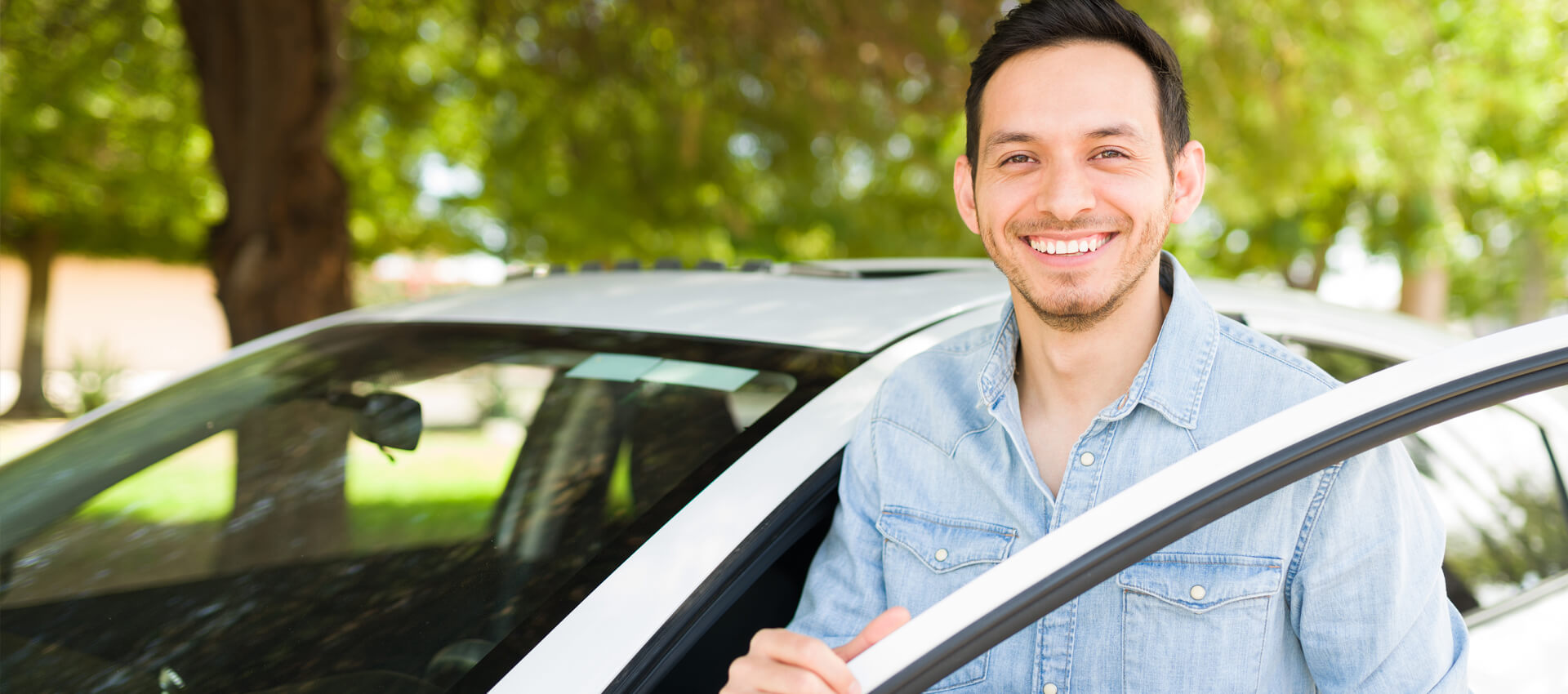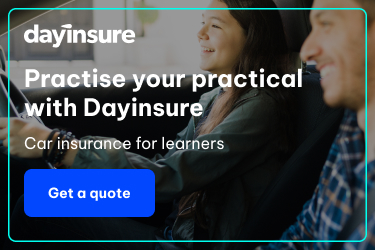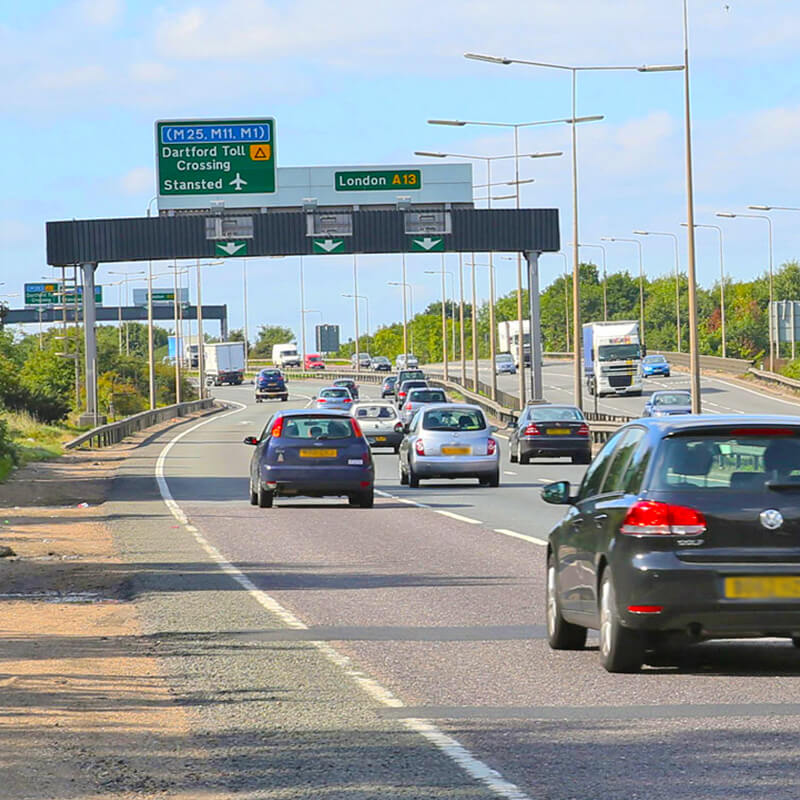What happens on the Practical Driving Test

When you’re ready to finally take your Practical Driving Test you’ll probably feel a little nervous, but there’s nothing to worry about.
Once you know what to expect, you’ll be better prepared! By the day of your Practical Driving Test, it’s important that you’ve already addressed any Driving Test nerves that you might have so you can stay calm throughout the test.
Driving Test Tip 1: Make sure you have a driving lesson before your test as this helps you to practice any areas that you’re concerned about, and it’s more likely your nerves will settle as you drive more. So, by the time the examiner is in the car, you’ll be much calmer.
What to bring to the Practical Driving Test
Driving Test Tip 2: Make sure you’re on time for the test! Arrive between 10 and 20 minutes before your test so you can compose yourself.
On the day of your Driving Test you must make sure you bring with you:
- Your Theory Test pass certificate (or confirmation) if you are not exempt
- Your photocard provisional licence. If you have an old-style paper licence, you must take your signed driving licence and you must also bring a valid passport. Please note that no other form of photographic identification will be accepted.
- You must also bring an appropriately insured and licensed vehicle suitable for the test.
Driving Test Tip 3: Obviously, most people will use their instructor’s car, but you can use your own if you have one. We would recommend using your instructor’s car as you’ll be familiar with all the controls which could help when you get to the Show Me Tell Me part of the test.
Taking your driving instructor as the observer on the Practical Driving Test
The DVSA encourages you to take your driving instructor with you, but you are allowed to take another observer on the test, preferably the person who has taught you to drive.
Either way, they will be required to sit in the back of the car and not interact with you or offer advice in any way throughout your Driving Test.
Some learner drivers see taking an observer on their test as a negative move, as they don’t want the added pressure of knowing that there’s another person in the car.
However, for most this is a positive change as it allows the observer to listen to the feedback provided by the examiner at the end of the test.
Pros of taking an observer on test with you
If you do decide to take your instructor with you as the observer on test, they will be able to tell you exactly where you went wrong and how to avoid making the same mistakes again next time, which will help to improve your overall learning and development.
What will I be expected to do on my Practical Driving Test?
On your test, you need to be able to drive safely and skilfully in various road and traffic conditions.
You will be given directions clearly and in good time, and asked to carry out set exercises.
Before you can start the driving part of your test you must complete an eyesight check to ensure that you can read a number plate on a parked vehicle from 20 metres away.
If you need more information about the eyesight check, read our eyesight requirements blog.
Driving Test Tip 4: Make sure you’ve been practising in as many different road conditions as possible. If your test is taken on a foggy day, you’ll need to be confident that you can drive in these conditions.
You will also be asked vehicle safety check questions known as “Show Me, Tell Me”.
The “Tell Me” questions are answered verbally by explaining the answer to the examiner, but with the “Show Me” questions you will need to carry out the check in full to show the examiner you understand the required check.
At the start of the test, you will be asked a ‘Tell Me’ question.
A full guide to this is available on our Show Me Tell Questions blog.
Once you begin driving, there should be no surprises, as your instructor will have thoroughly prepared you for everything you’ll need to do. Simply keep calm and concentrate on your driving.
Driving Test Tip 5: If you make a mistake, don’t panic, it will make things worse! It’s more than likely a minor mistake and doesn’t necessarily mean you have failed your test.
Remember that you’re allowed 15 minors in the test so don’t overthink a mistake you think you’ve made.
What manoeuvres could I be asked to complete on the Practical Driving Test?
As from October 2010, you will now only be required to complete one manoeuvre from the following:
- Parallel parking.
- Reversing – pull up on the right side, reverse for two car lengths and then rejoin the traffic.
- Bay parking.
- Correctly answer a ‘Show Me’ question.
Your Practical Driving Test will also include the new Independent Driving which will last for approximately 20 minutes.
You will receive step by step instructions from the examiner which you must follow while proving that you can drive safely and make decisions independently.
The ‘Independent Driving’ portion of the test will involve the examiner asking you to follow road signs or diagrams (or a combination), or to follow sat nav directions which will have been supplied and pre-planned by the examiner.
What is the examiner looking for on the Practical Driving Test?
As you perform your test your examiner will be assessing your driving, and he or she will often be marking something down on a piece of paper (or on a tablet if they are using the new digital app).
Again, this is nothing to worry about. They are simply making a record of your test and are required to mark down any driving faults you make.
There are three different types of fault:
- Minor fault
- Serious fault
- Dangerous fault
For more information about how faults are assessed, read our Understanding Driving Test Faults blog.
Driving Test Tip 6: One of the biggest areas that people fail the test is on their ‘observation’ so make sure the driving instructor can see you checking your mirrors.
Back at the Test Centre after your test
Providing you have not accrued 16 or more minor faults, or a single serious or dangerous fault, you will pass your test!
On arrival back at the Test Centre, your examiner will go through your Driving Test report.
You may want to ask your instructor to come and listen to the explanation even if you’ve passed.
It’s still worth listening to what the examiner has to say because they’ll be pointing out your minor faults. This way you’ll become aware of the small mistakes you make whilst driving, enabling you to do your best to eliminate them and become a better driver.
If you’ve passed you’ll be given your shiny new pass certificate!
Good luck and let us know how you get on!




